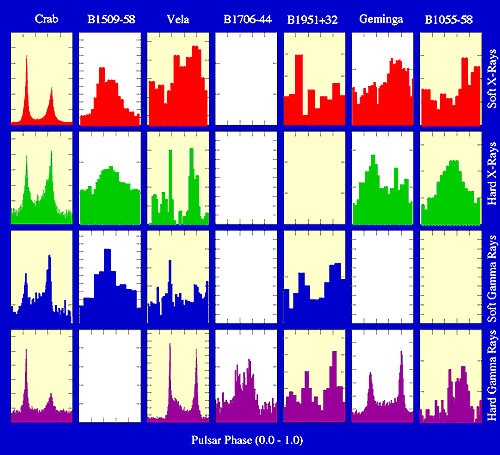High Energy pulse profiles of seven well-known pulsars
(Credit: D.J. Thompson (NASA/GSFC)) Pulsars, rapidly-rotating neutron stars, have brightness that varies dramatically as the star rotates, depending on which part of the pulsar beam is pointed toward us. This figure shows that the light curves (that pattern of changing brightness) can be different for different wavelengths even at high energies. Although some of the paterns are similar, many change dramatically in going from soft X-rays (below 1 keV) to hard X-rays (about 100 keV) to soft gamma rays (about 1 MeV) to hard gamma rays (above 100 MeV). At the highest energies, all these pulsars show a double-peaked light curve, suggesting that the beam is actually a hollow cone (or some other hollow surface). See also pulse profiles of these pulsars at other wavelengths.
IMAGES |
By Mission |
Stars |
HEASARC Home | Observatories | Archive | Calibration | Software | Tools | Students/Teachers/Public Last modified: Thursday, 26-Jun-2003 13:48:45 EDT |


